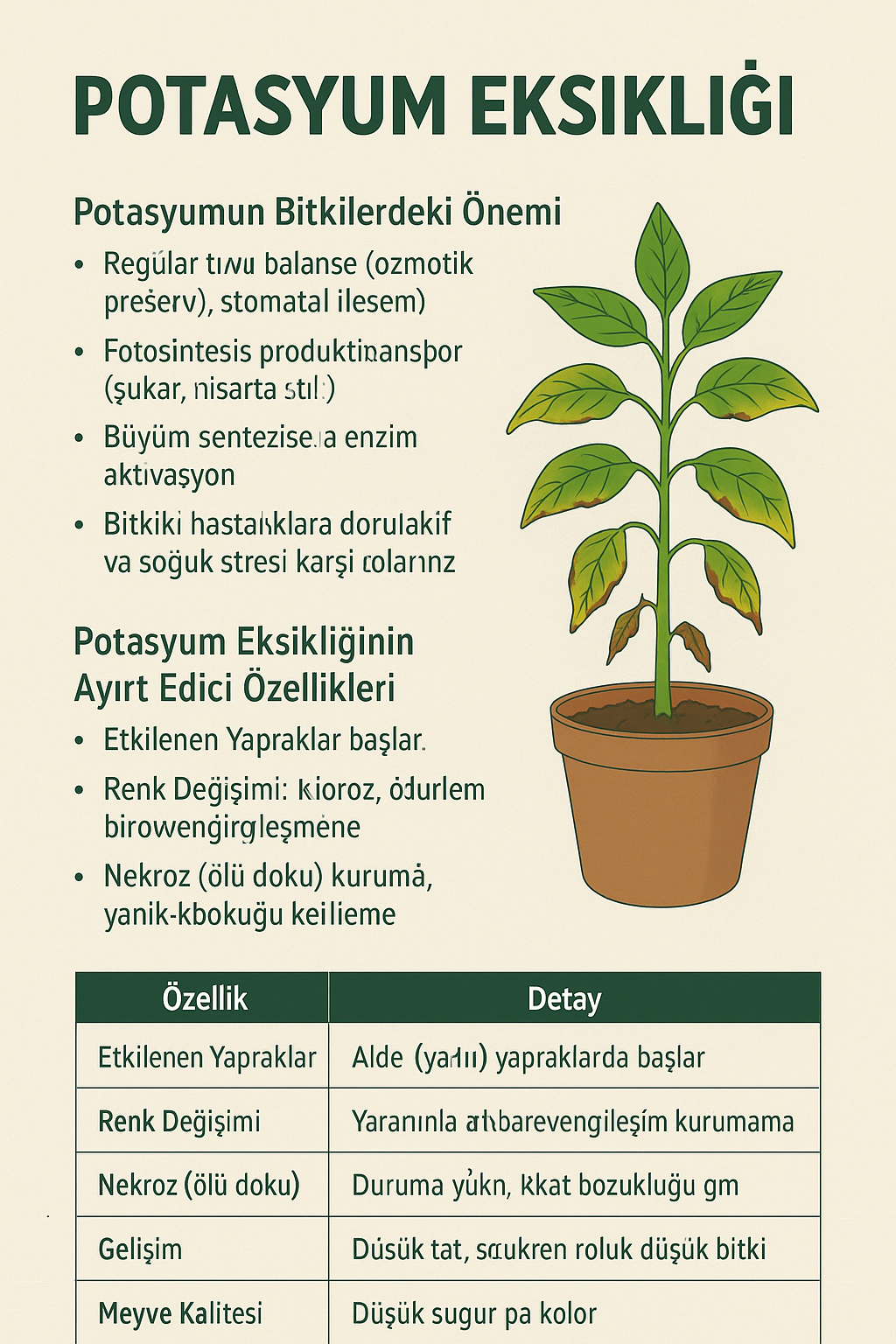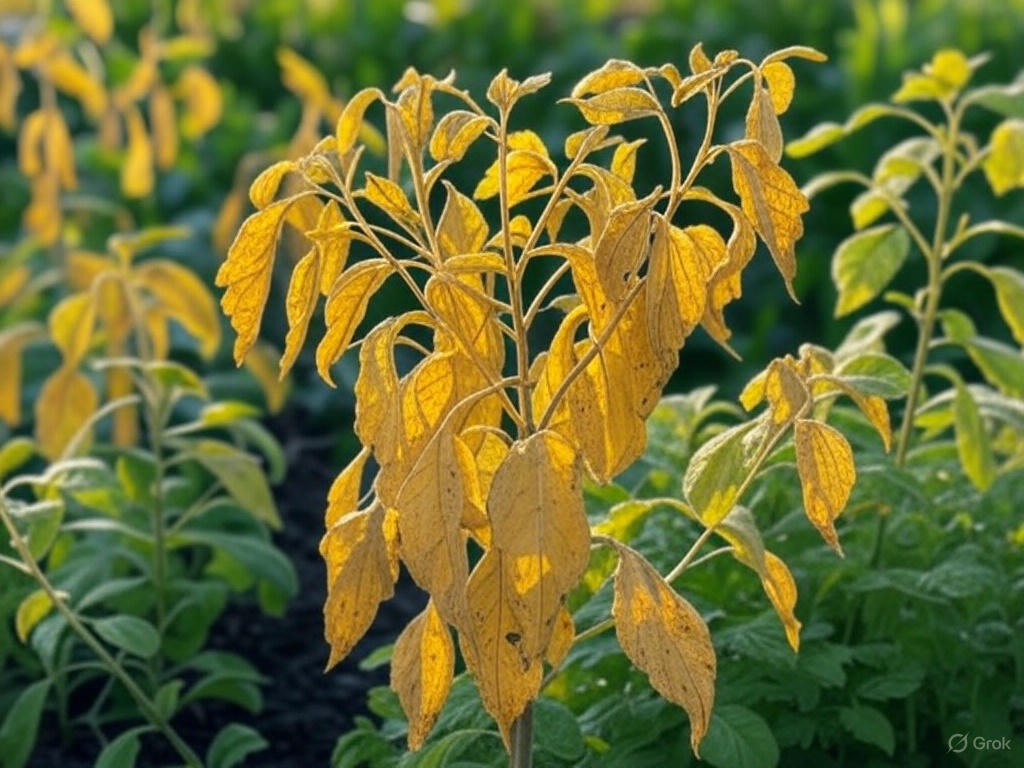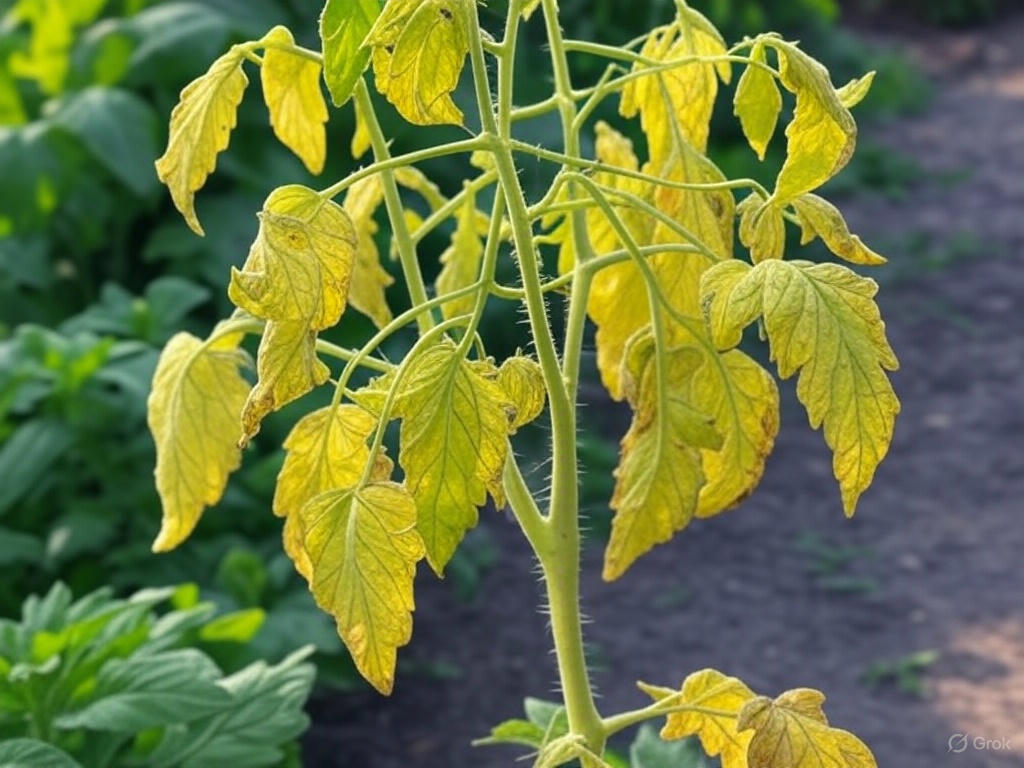NOVENZA
WHAT IS POTASSIUM (K)? WHAT DOES IT DO, WHAT HAPPENS IN ITS DEFICIENCY, AND HOW IS IT DETECTED?
The Cornerstone of Plant Life
The Importance of Potassium in Plants
Potassium (K) is the third essential macronutrient for plants, alongside nitrogen (N) and phosphorus (P). It is critical for healthy growth, development, and resistance to various stress factors. Potassium is involved in vital processes such as water balance regulation, nutrient transport, enzyme activation, and resistance to diseases.
Key Functions of Potassium in Plants
- Water Balance Regulation (Osmoregulation): Regulates water potential in cells, controlling water uptake and loss.
- Nutrient Transport (Phloem Transport): Facilitates the movement of photosynthesis products and other nutrients to different parts of the plant.
- Enzyme Activation: Essential for the proper functioning of numerous enzymes.
- Stomata Opening and Closing Regulation: Controls the opening and closing of leaf stomata, regulating gas exchange and transpiration.
- Protein Synthesis: Present in the structure of ribosomes, it plays a role in the binding of amino acids to proteins.
- Photosynthesis: Indirectly contributes to photosynthesis by facilitating the transport of photosynthetic products.
- Resistance to Diseases and Pests: Enhances plant resistance to fungal diseases, bacterial infections, and insect pests.
- Fruit Quality and Yield: Positively affects fruit size, shape, color, taste, and shelf life, while increasing overall yield.
- Winter Hardiness: Improves plant resilience to winter cold and frost events. oni>
What Happens in Potassium Deficiency?
Potassium is a mobile element within plants. In cases of deficiency, potassium is transported to younger, actively growing parts. As a result, symptoms typically appear first in older leaves.
- Yellowing (Chlorosis) and Burns (Necrosis) at Leaf Edges and Tips: Older leaves first show yellowing at the edges and tips, followed by browning and a scorched appearance.
- Leaf Curling and Wrinkling: Leaves may curl downward or develop a wrinkled appearance.
- Stem Weakness and Lodging: Plant stems weaken and may bend or lodge easily.
- Stunted Growth: Overall plant growth slows, and plants remain stunted.
- Short Internodes: The spaces between nodes on the stem may become shorter.
- Underdeveloped Root System: The root system may remain weak and poorly developed.
- Low Yield and Poor-Quality Produce: Fruits and vegetables become smaller, misshapen, and have reduced taste and shelf life.
- Increased Susceptibility to Diseases and Pests: Plants become more vulnerable to diseases and pests.
- Irregular Maturation: Fruit maturation may be uneven.

Example Image: A leaf with potassium deficiency showing edge burns and yellowing.
How to Detect Potassium Deficiency?
Observing visual symptoms in plants is key to identifying potassium deficiency:
- Leaf Symptoms: Edge and tip burns with yellowing in older leaves are the most prominent signs.
- Stem Strength: Weak and easily bending plant stems.
- Growth Rate: Slow overall growth of the plant.
- Fruit and Vegetable Quality: Reduced size, deformities, and quality decline in produce.
- Soil Testing: The most accurate method to determine potassium levels in the soil.
- Leaf Analysis: Laboratory analysis of leaf samples taken from the plant.
Distinctive Features of Potassium Deficiency
- Edge and Tip Burns in Older Leaves: This symptom is characteristic of potassium deficiency.
- Mobile Element: Symptoms primarily appear in older leaves.
- Leaf Curling and Wrinkling: Characteristic leaf deformations in some plant species.
Visual Symptoms
The following characteristics may be observed in a plant leaf with potassium deficiency:
- Yellowing (Chlorosis): Yellowing starting at the edges of older leaves and progressing inward.
- Burns (Necrosis): Browning and drying of yellowed areas (at edges and tips).
- Leaf Curling: Leaf edges curling downward.
- Wrinkling: Irregularities on the leaf surface.


Example Image: A leaf with potassium deficiency showing edge burns and yellowing.